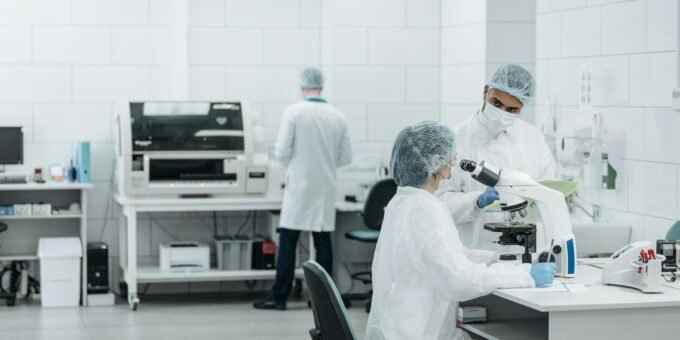
Introduction
The healthcare industry is undergoing a profound transformation, fueled by rapid advancements in technology. From artificial intelligence (AI) to wearable devices and telemedicine, healthcare technology innovations are reshaping how care is delivered, managed, and experienced by patients and providers alike.
In this comprehensive article, we’ll explore the key innovations driving this change, their benefits and challenges, and what the future holds for a tech-enabled healthcare system. Whether you’re a medical professional, healthcare executive, investor, or patient, understanding these technological shifts is essential.
1. Artificial Intelligence (AI) and Machine Learning
1.1 AI in Diagnostics and Treatment
AI is revolutionizing diagnostics with tools that analyze medical images, detect anomalies, and predict diseases with greater accuracy than ever before.
Key applications include:
- Radiology: AI algorithms identifying tumors in X-rays and MRIs
- Pathology: Automated analysis of biopsy slides
- Personalized medicine: Predictive analytics to tailor treatment plans
Example: An AI model developed by Google Health detected breast cancer more accurately than radiologists in a clinical trial.
1.2 AI in Administrative Processes
Beyond clinical applications, AI streamlines administrative workflows, reducing time and operational costs.
Use cases:
- Automated medical billing and coding
- AI-powered virtual assistants for appointment scheduling
- Chatbots for patient inquiries and symptom triage
Benefits:
- Reduced burden on staff
- Increased accuracy
- Improved patient satisfaction
2. Telemedicine and Remote Care
2.1 Growth of Virtual Care Models
The pandemic accelerated the adoption of telemedicine, and it’s now a mainstay in healthcare delivery.
Telemedicine services include:
- Primary care consultations
- Mental health therapy
- Chronic disease management
Table: Telemedicine Use Cases
| Specialty | Telehealth Usage Example |
|---|---|
| Dermatology | Skin condition evaluations via video |
| Psychiatry | Virtual counseling sessions |
| Cardiology | Remote monitoring of vital signs |
2.2 Remote Patient Monitoring (RPM)
RPM tools enable real-time tracking of health metrics from home.
Devices include:
- Smart blood pressure monitors
- Glucose tracking sensors
- ECG-enabled wearables
Benefits of RPM:
- Reduces hospital readmissions
- Enables proactive intervention
- Enhances patient autonomy
3. Wearable Technology and Mobile Health
3.1 Consumer Health Devices
The rise of consumer-focused health tech has made wellness more accessible and data-driven.
Popular devices:
- Fitness trackers (Fitbit, Garmin)
- Smartwatches (Apple Watch, Samsung Galaxy Watch)
- Sleep monitors
These tools promote preventive health by tracking:
- Steps and activity levels
- Sleep cycles
- Heart rate variability
3.2 Clinical Applications of Wearables
Healthcare providers are integrating wearable data into care plans.
Clinical examples:
- Cardiology: Detecting arrhythmias via wearable ECGs
- Pulmonology: Monitoring respiratory function in COPD patients
- Diabetes: Continuous glucose monitoring (CGM)
Impact:
- More personalized treatment
- Early detection of complications
- Improved medication adherence
4. Data Security, Interoperability, and Health IT
4.1 Electronic Health Records (EHRs) and Interoperability
Integrated EHR systems are foundational to modern care.
Challenges in EHR systems:
- Data silos across providers
- Incompatible software platforms
- Poor user interfaces
Solutions:
- HL7 FHIR standards for interoperability
- Cloud-based health information exchanges (HIEs)
- APIs for third-party app integration
4.2 Cybersecurity in Healthcare
As more data moves online, security becomes critical.
Risks include:
- Ransomware attacks
- Data breaches
- Identity theft
Protective measures:
- Multi-factor authentication (MFA)
- Encryption at rest and in transit
- Regular security audits
Bullet Points: Cybersecurity Best Practices
- Train staff on phishing awareness
- Update software and firmware regularly
- Use HIPAA-compliant platforms
5. Robotics, Genomics, and Future Innovations
5.1 Robotics in Healthcare
Robotic systems are enhancing precision and efficiency in surgery and care delivery.
Applications include:
- Robotic-assisted surgeries (e.g., da Vinci system)
- Automated pharmacy dispensing
- Exoskeletons for rehabilitation
Advantages:
- Reduced human error
- Shorter recovery times
- Lower infection risk
5.2 Genomics and Precision Medicine
Advances in genetic sequencing are enabling personalized treatment based on a patient’s DNA.
Technologies involved:
- CRISPR gene editing
- Whole genome sequencing
- Pharmacogenomics
Impact on care:
- Targeted cancer therapies
- Identification of inherited conditions
- Predictive risk assessments
5.3 Future Technologies to Watch
Innovation continues with emerging tech poised to reshape healthcare further.
On the horizon:
- Digital twins for patient simulation
- Blockchain for health data exchange
- AI-driven drug discovery platforms
Example Table: Emerging Technologies
| Technology | Potential Use in Healthcare |
| Digital Twins | Simulate treatment outcomes |
| Blockchain | Secure patient data sharing |
| AI Drug Discovery | Speed up R&D process |
Conclusion
Healthcare technology innovations are transforming every facet of the industry—from diagnostics and patient engagement to administrative workflows and clinical decision-making. As these innovations continue to evolve, stakeholders must adapt to integrate them meaningfully into care delivery.
Patients benefit from more personalized and accessible healthcare, while providers gain tools to improve outcomes and efficiency. However, this future depends on addressing interoperability, security, and equitable access.